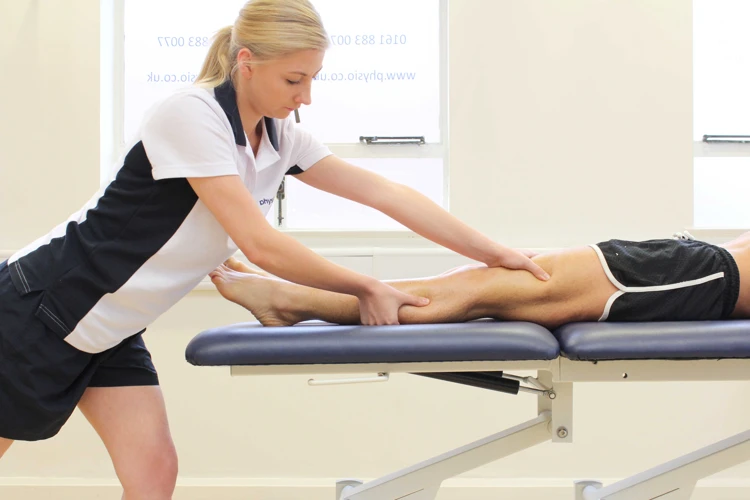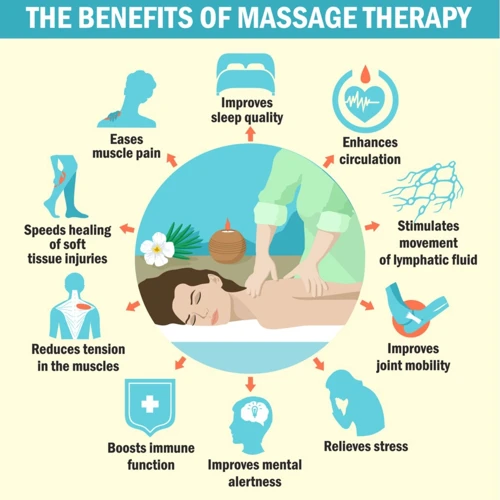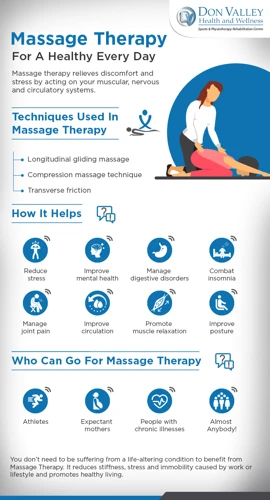Do you suffer from chronic inflammation and pain? If so, you may be wondering how does massage reduce inflammation? Massage therapy is an effective form of natural pain relief that can help to reduce inflammation and ease discomfort. In this article, we will explore the benefits of massage therapy for pain relief and how it can help to reduce inflammation.
Contents
Definition of Inflammation

Inflammation is the body’s response to injury, infection, or environmental irritants, such as allergens. It is characterized by redness, swelling, heat, and pain. The immune system releases chemicals to help protect the body from further damage, which causes the symptoms of inflammation.
How Does Massage Help Inflammation?
Massage therapy is used to reduce inflammation by improving circulation, decreasing muscle tension, and promoting relaxation. The techniques used in massage therapy increase blood flow to the affected area, allowing the body to bring in more oxygen and nutrients to help with healing. Massage also helps to reduce muscle tension, which can help reduce pain. Finally, massage therapy can help to promote relaxation, which can reduce stress and help the body to heal.
How Does Massage Help Reduce Inflammation?

Massage therapy is an effective way to reduce inflammation. The massage technique helps to reduce swelling and pain in the affected area. It also increases blood flow to the area, which helps to reduce inflammation and promote healing. Massage can also help to reduce stress and tension, which can contribute to inflammation.
Benefits of Massage for Inflammation:
| Benefit | Description |
|---|---|
| Relieves Pain | Massage therapy helps to relax the muscles and reduce pain by relieving tension in the affected area. |
| Improves Blood Flow | Massage helps to increase circulation, which can reduce inflammation and promote healing. |
| Reduces Stress and Tension | Stress and tension can contribute to inflammation. Massage can help to reduce stress and tension, which can help to reduce inflammation. |
By reducing inflammation, massage therapy can help to relieve pain and promote healing in the affected area. Massage can also help to reduce stress and tension, which can contribute to inflammation. The benefits of massage for reducing inflammation make it an effective treatment option for patients suffering from inflammation-related conditions.
Role of Massage in Pain Relief

- Reduces Muscle Tension: Massage therapy is an effective way to reduce muscle tension and pain, especially in the lower back, neck and shoulders. Massage therapy helps relax the muscles, increasing blood flow and reducing inflammation.
- Improves Mobility: Massage techniques can help improve mobility and reduce pain. Massage can also help improve range of motion and flexibility, which can reduce the risk of injury and improve posture.
- Improves Circulation: Massage helps increase circulation, which can help reduce inflammation and improve the delivery of oxygen and nutrients to the affected area.
- Reduces Stress: Massage can help reduce stress and tension, which can help reduce pain. Stress can worsen pain, so by reducing stress levels, massage can help reduce overall pain levels.
- Relieves Pain: Massage can help reduce pain caused by muscle spasms, strains, and other physical ailments. Massage can also help reduce chronic pain caused by conditions such as arthritis and fibromyalgia.
Types of Massage Therapy

- Swedish Massage – includes long strokes, kneading, and friction techniques on the more superficial layers of muscles.
- Deep Tissue Massage – uses deeper pressure to release chronic muscle tension and knots.
- Sports Massage – designed to prevent injury, improve performance, and help athletes recover.
- Trigger Point Massage – focuses on the release of tension in the muscles caused by trigger points.
- Myofascial Release – applies sustained pressure into the connective tissue to eliminate pain and restore motion.
- Shiatsu Massage – uses finger pressure to harmonize the body’s energy pathways.
- Reflexology – combines finger and thumb pressure on certain areas of the feet, hands and ears.
- Aromatherapy Massage – combines massage with the use of essential oils.
Benefits of Massage Therapy

Reduced inflammation: Massage therapy can help to reduce inflammation in the body and improve circulation. This can help to reduce pain and stiffness caused by inflammation.
Relaxation: Massage therapy can provide a sense of relaxation and well-being. This can help to reduce stress and anxiety, which can help to improve overall health.
Improved range of motion: Massage therapy can help to improve range of motion by loosening muscles and reducing stiffness. This can help to improve mobility and reduce pain.
Improved sleep: Massage therapy can help to induce a sense of relaxation and increase levels of serotonin, which can help to improve sleep quality.
Reduced pain: Massage therapy can help to reduce pain by decreasing inflammation, improving circulation, and releasing endorphins, the body’s natural painkillers.
Reduced stress: Massage therapy can help to reduce stress and anxiety by reducing the production of the stress hormone cortisol. Massage therapy can also help to improve mood and reduce symptoms of depression.
Limitations of Massage Therapy

- Time: Massage therapy is time-consuming and requires multiple sessions to experience the full benefits.
- Accessibility: Many people do not have easy access to an experienced massage therapist.
- Cost: Massage therapy can be expensive and may not be covered by insurance.
- Painful Areas: Massage may be uncomfortable in areas of the body that are inflamed and painful.
- Safety: People with certain health conditions or injuries may not be able to safely receive massage therapy.
Potential Risks of Massage Therapy
Massage therapy can be beneficial for reducing inflammation and providing pain relief, but there are some potential risks and side effects to consider. As with any medical treatment, there is always the risk of infection. It is important to make sure that your massage therapist is using clean and sanitized equipment. Additionally, massage can cause bruising or skin irritation, so if you have sensitive skin, you should be aware of this.
Massage therapy can also exacerbate existing conditions, such as herniated discs or sciatica, so it is important to discuss any underlying health issues with your massage therapist. You should also be aware that massage therapy can cause an increase in blood pressure and heart rate, so if you have an existing heart condition you should talk to your doctor before getting a massage.
Finally, massage therapy can cause soreness or fatigue after the session, so it is important to drink plenty of water and rest after your session. This can help reduce any potential side effects and help your body recover more quickly.
Frequently Asked Questions
What Types of Massage are Most Effective in Reducing Inflammation?
Swedish Massage, Deep Tissue Massage, and Trigger Point Therapy are some of the most effective massage techniques for reducing inflammation. Swedish Massage combines long, gentle strokes with kneading and friction techniques to relax the entire body. Deep Tissue Massage uses slow, deep strokes to target deeper muscles and connective tissues and helps to reduce chronic pain and tension. Trigger Point Therapy is a type of massage that focuses on applying pressure to specific points on the body to relieve pain and tension. All of these massage techniques can be used to reduce inflammation and improve overall health.
Does Massage Work Better Than Other Types of Treatments for Inflammation?
Massage therapy is a powerful treatment for reducing inflammation and relieving pain. Studies have found that massage can reduce inflammation in the body, which can help to relieve muscle and joint pain. Additionally, massage can help to reduce stress levels, which can help to reduce inflammation. Massage is often used in combination with other treatments, such as physical therapy and chiropractic care, to provide maximum pain relief and improve overall wellbeing. Massage is a safe and effective treatment for reducing inflammation and relieving pain.
How often should I get a massage if I want to reduce inflammation?
For best results, it is recommended to receive a massage at least once a week for several weeks to reduce inflammation. However, depending on the severity of your condition, more frequent massages may be necessary. Discuss with your massage therapist the best frequency for your individual needs.
Does Massage Help Reduce Inflammation in All Parts of the Body?
Yes, massage can help reduce inflammation in all parts of the body. Regular massage therapy can help promote healing, reduce inflammation and alleviate pain. Here are some of the benefits massage can provide in reducing inflammation:
- It can reduce inflammation in muscles, joints and other soft tissues.
- It can help improve circulation, which helps to reduce inflammation.
- It can help to improve the flow of lymphatic fluid, which helps to reduce swelling.
- It can help relax the muscles, which can help reduce inflammation.
- It can help reduce stress, which can help reduce inflammation.
- It can help to improve overall immune system function, which helps reduce inflammation.
Massage can be beneficial for people dealing with acute or chronic inflammation. Many people find relief from massage and report feeling less pain and discomfort. Massage therapy can be used in conjunction with other treatments such as physical therapy, medications and lifestyle changes.
Are there any potential side effects of massage therapy for reducing inflammation?
Massage therapy is generally considered safe and may have some benefits for reducing inflammation; however, it can also have potential side effects. These include skin irritation, bruising, or pain at the site of the massage. In rare cases, massage therapy can cause nerve damage, or cause blood clots to form in the veins. It is important to discuss any potential risks with your doctor before beginning a massage therapy regimen.
Conclusion
Massage therapy is a great way to reduce inflammation and provide pain relief. It helps to increase circulation and reduce muscle tension, while also promoting relaxation. Massage therapy has been proven to be effective in reducing inflammation and providing relief from a variety of chronic and acute conditions. When used in combination with other treatments, massage can help to provide a more holistic approach to managing pain.

